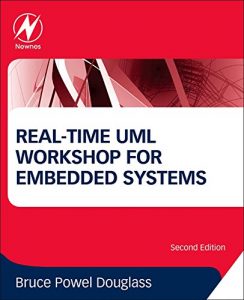Written as a workbook with a set of guided exercises that teach by example, this book gives a practical, hands-on guide to using UML to design and implement embedded and real-time systems.
- A review of the basics of UML and the Harmony process for embedded software development: two on-going case examples to teach the concepts, a small-scale traffic light control system and a large scale unmanned air vehicle show the applications of UML to the specification, analysis and design of embedded and real-time systems in general.
- A building block approach: a series of progressive worked exercises with step-by-step explanations of the complete solution, clearly demonstrating how to convert concepts into actual designs.
- A walk through of the phases of an incremental spiral process: posing the problems and the solutions for requirements analysis, object analysis, architectural design, mechanistic design, and detailed design.






